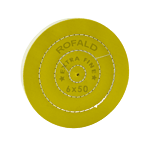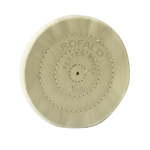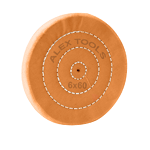Polishing Buffer | Polishing Buff Jewelry
Polishing and buffing are processes used to enhance the appearance of an object, remove traces of oxidation, prevent corrosion, and reduce chances of contamination of instruments. The two processes are also used in jewelry manufacturing. Polishing and buffing are generally the last steps of a manufacturing process.
What Are the Benefits of Polishing Buffer?
Polishing buffer is the process used to shine metals, metal composites, or wood. The key benefit of this polishing buffer process is that it removes excess product and increases the level of gloss on the component. It also helps spread the product in an even manner, ensuring there is a level and even finish. In metallurgy and metallography, the polishing buffer process is used to make a defect-free and flat surface that allows for the clear and undisturbed examination of themetal's microstructure when examined under a microscope. In stainless steel objects, polishing can improve sanitary benefits. Polishing buffer can also refer to the act of removing oxidation from a metal object – this is accomplished with the use of tarnish remover or metal polish.
Tips for Polishing Metal With Polishing Buff
It is important toclean the object you plan on using polishing buff. A thorough cleanup is essential and should be the first step taken. Metal will look dull when there is dirt or other scratches that prevent light from reflecting directly off the metal. In most cases, a dull metal is just dirty. Clean the piece well and if it still looks dull, go ahead with polishing buff.
Safety is also a priority. When using polishing buff, equipment like face shields, dust masks, gloves, and safety goggles are essential. To prevent accidental gouging during the polishing buff process, you may want to protect tools and surfaces with padding or tape.
How To Use Buff For Polishing
To use buff for polishing, you must choose the appropriate compound - depends on the surface you want polished. You must begin with the coarsest available compound. Charts online will help you make the right decision. This polishing compound will be applied to the revolving buffing wheel. This will be applied as required during the polishing and buffing operation. Be sure to use only a little pressure when applying the revolving buff to the work surface as this will allow the wheel and the compound to do the heavy lifting.
If you notice that the surface looks dull even after the polishing, you may need to repeat it with a finerbuffing compound. However, before you move from one buffing compound to another, use a sharp tool to completely remove the existing compound. Ideally, you would use a different buffing wheel for each different compound. If the finest possible polishing compound is used to a felt wheel or stitch buffing wheel, great finishes can be achieved. When the polishing job is done, the working surface must be washed with warm water in order to remove any residue buffing compound or accumulated dirt. After the process, dry with chamois or a soft wool cloth. Using clear metal lacquer can help prevent oxidation in the future.
Importance of Polishing for Jewelry
Polishing for jewelry is often seen as a mundane job but it remains a crucial operation in the jewelry making process. The final appearance of the jewelry is, to a large extent, down to the polishing for jewelry. While a good polish does not make up for poor workmanship, a poor polish will ruin any expert workmanship.
What is Buffing and Polishing?
Buffing and polishing are finishing processes that help smoothen a surface. The difference is how the two processes accomplish this goal.
What is the Difference Between Buffing and Polishing
What is the Difference Between Buffing and Polishing? It’s a very common question. On a technical level, polishing includes operations where the abrasive is glued to the wheel. On the other hand, buffing refers to all processes where the abrasive is applied to the wheel. Buffing is less harsh than polishing while the latter is more aggressive. Due to this, buffing delivers a brighter and smoother finish. There is a very common myth that all polished surfaces have a bright mirror-like finish but this effect is actually delivered by buffing process.





